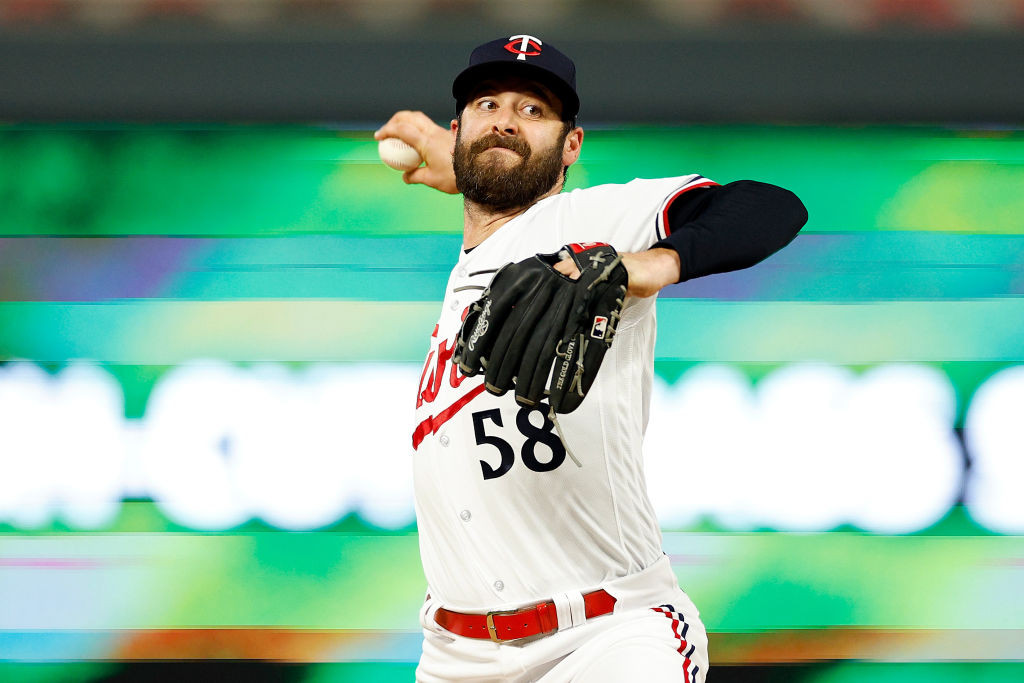Dylan Floro has heard the explanations, seen the analytics, understands why there’s ample evidence his performance in 2023 was better than the final stats suggest.
He also knows the stats tell the truth about how he pitched this season.
“It wasn’t a good year for me, I know that,” the veteran reliever said Wednesday during an introductory Zoom call with Nationals reporters. “I mean, I had some bad luck, people said, but at the end of the day I’m the one pitching. I’ve just got to figure out a way to get it done, and I know coming back this year, I’m feeling good.”
From 2018-22, Floro enjoyed fairly consistent success for the Reds, Dodgers and Marlins, sporting a 2.96 ERA and 1.219 WHIP over 253 appearances. Then came the 2023 season, which he split between the Marlins and Twins and finished with an uncharacteristic 4.76 ERA and 1.535 WHIP across 62 games.
The Nationals, who signed the 32-year-old right-hander for $2.25 million plus incentives, are hoping for a bounceback performance, citing some peripheral numbers that suggest he was the victim of bad luck. His FIP was a solid 2.96 (same as his actual ERA over the previous five seasons), his home run and walk rates were virtually unchanged and his strikeout rate actually increased. Hitters actually barreled up far fewer balls than in the past.
Floro knows all that. Shoot, he lived it. But he isn’t about to treat it as gospel and just assume everything will revert back to normal next season. So he has spent his winter to date trying to make some fixes that don’t rely on automatic regression to the mean.
“I’ve been working on some different things,” he said. “Executing pitches a little bit better with two strikes. There’s little things that I can change to hopefully go into next year and it’ll help me out.”
Floro has always been a pitch-to-contact guy more than a make-you-miss guy. He throws a lot of two-seam fastballs designed to induce ground balls. It helps explain how he’s only surrendered 19 home runs in 334 major-league innings (one of which was Gerardo Parra’s go-ahead grand slam at Dodger Stadium in his debut series for the Nats).
But even though he gave up more ground balls than ever this season, he also gave up more hits. It helped him realize a ground ball isn’t always the best result, depending on the situation.
“I think I got a big taste of that last year, just giving up a lot of weak contact that ended up finding the hole,” he said. “Even if it was something with the shift, or I didn’t execute a pitch in the right spot and they were able to hit it where the shift wasn’t, or whatever. There’s a lot of things. …
“Maybe just getting a pop up with the runner on second is better than giving up a ground ball, or something like that. Just throwing the right pitch at the right time. Maybe it’s trying to execute at the top of the zone, instead of working the bottom of the zone. Just different things like that, I think I could do better.”
It’s certainly worth pointing out that Floro’s increase in ground ball hits surrendered coincided with Major League Baseball’s ban on infield shifts. It may have had something to do with his struggles, maybe a lot more than something.
With a year of shift-free baseball now behind him, Floro has some ideas about approaching situations in a different manner.
“When the game changes something, it’s hard just to jump and try to change right away from what I’ve been doing for the last five years,” he said. “So I think going into that now, I have a little bit better game plan and knowing: ‘Alright, we’ve got this shift, or we got that, or this person is playing here.’ Maybe it’s better to throw a pitch outside than inside, or maybe go high-in and don’t throw it down low so he has the least chance of pulling it into that (open hole in the infield).”
Floro will have to wait until spring training and then the regular season to see if the change in approach changes anything for better or worse. Until then, he intends to keep working on whatever he can in the offseason and try to make sure he gives the Nationals what they expected when they signed him: an experienced reliever who can help take some of the late-inning load off Kyle Finnegan, Hunter Harvey and Tanner Rainey.
“I’m going to do the same thing I’ve always done in the past,” he said. “When my name is called on and I get that opportunity to pitch, I’m going to go out there and help the team as much as I can, so we’re in the win column.”
By accepting you will be accessing a service provided by a third-party external to https://www.masnsports.com/





